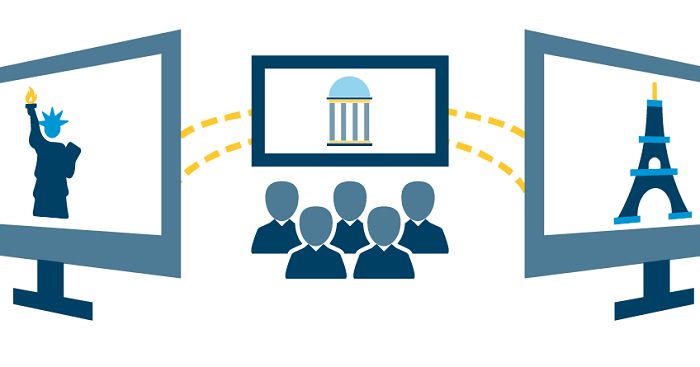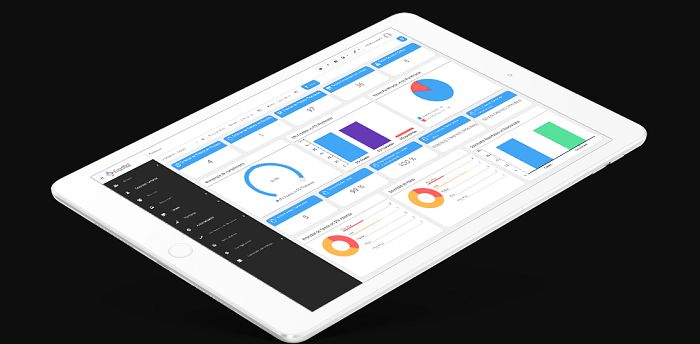Table of Contents Show
The last decade has seen conferencing software evolve to unimaginable levels; we now have AI-powered tools like Aira. As well, capabilities of smartphones and tablets have continued to rival those of traditional computers. These factors have blurred the line between web conferencing and video conferencing.
Today, video conferencing and web conferencing are often seen as one and the same.
- For one, both use the internet, and both often take place online, in real time
- Both are done virtually, so there is no cost of travel or the need to be in the same place
- They also both have the same benefits to the user, such as: cost effectiveness, streamlining communication and increasing productivity. Some of these benefits can also be enhanced depending on the conferencing software you choose. Aira for instance, eliminates the need to take minutes manually.
But while these similarities exist between both types of conferencing, they are not the same. We will discuss 5 major differences between web conferencing and video conferencing below. But first, let’s define web conferencing and video conferencing.
What is a video conference?
A video conference is a virtual face to face meeting that allows audio and video data transmission between two or more people. Participants are required to have a web camera, a microphone and/or speakers and access to computer networks. Traditionally, companies have always outfitted dedicated rooms with third party video conferencing hardware.
However, as video conferencing software landscape has continued to evolve, such meetings can now be held on smartphones and tablets, often on-the-go. What’s more, minutes of meetings can be automatically captured and shared with attendants. This is possible if you are using Aira, an advanced meeting tool that uses artificial intelligence to power collaborative meetings between groups.
What is a web conference?
According to Wikipedia, web conferencing is a term that encompasses:
- Online conferencing, that is, formal meetings where participants confer and make presentations about a topic
- Collaborative services such as webcasts, webinars and web meetings
- Non-collaborative, informal, peer to peer web meetings
Web conferencing tools also allow content sharing via the web, through the meeting client or a shared drive. Some web conferencing software may also require download and installation. Web conferencing hardware can also be installed on-premise, and this is common within large organizations.
A well-known type of web conference is a webinar. You can hold a live presentation via a webinar and interact with your audience through tools like live chat or white board. Webinars are great for collaborating on projects, online courses and seminars.
To attend a web conference, you need a web browser and a link generated for that meeting. Attendants need a username and password to log into the link.
5 major differences between web conferencing and video conferencing
- Use of video
With video conferencing, you connect two or more locations by the use of webcams for an interactive meeting. Usually, web conferences or webinars dispense with video, though they sometimes incorporate live streaming, when there is need to push video content to an audience.
- Interactive
Web conferences are not necessarily interactive as they usually feature a speaker, such as a lecturer, and participants whose main role is to listen in and learn. Participants can ask questions through the chat function, and the webinar host can pick and choose which of those questions to answer.
On the other hand, video conferencing is often interactive as participants can see each other. Furthermore, video conferencing usually acts as a substitute to live business meetings. Therefore, all participants are connected through video and are able to participate and give feedback.
- Network
You can run a video conference over the internet or through the local network of your company. Internet is mandatory for webinars because you need it for your browser to connect. there are however cases where enterprises use on-premise platforms that allow external access.
- Equipment
The minimal requirements for video conferences include: a pc and a camera. If you want to set up conference rooms, you can include high quality speakers, microphones and cameras. Often, video conferencing tools only support limited attendance.
The main purpose of a web conference is to broadcast information from a speaker to a wide audience. some webinars can feature more than one speaker and thousands of attendees. As such, most web conferencing tools don’t limit attendance. If attending distance learning, web conferencing should be your model of choice.
In addition, video conferencing tools are highly integrative, and some like Aira can integrate with your CRM for smoother team collaboration. Integration of web conferencing tools mostly happens at calendar level.
- Ease of use
You don’t need administrator authorization to use web conferencing. With a browser, a link and password, you can join any web conference.
Video conferencing systems requiring high security are usually controlled by an administrator, who controls user accounts. It is however possible for guest users to participate in video conferences through WebRTC.
Conclusion: Which conferencing option should you choose?
Often, you can use the same software to perform both types of conferences. As such, your goals should determine the tool you choose. For instance, if video and audio quality are top on your list, then your tool should support that goal. If capturing minutes of meetings is crucial, then Aira will support this goal.
Happy conferencing!











